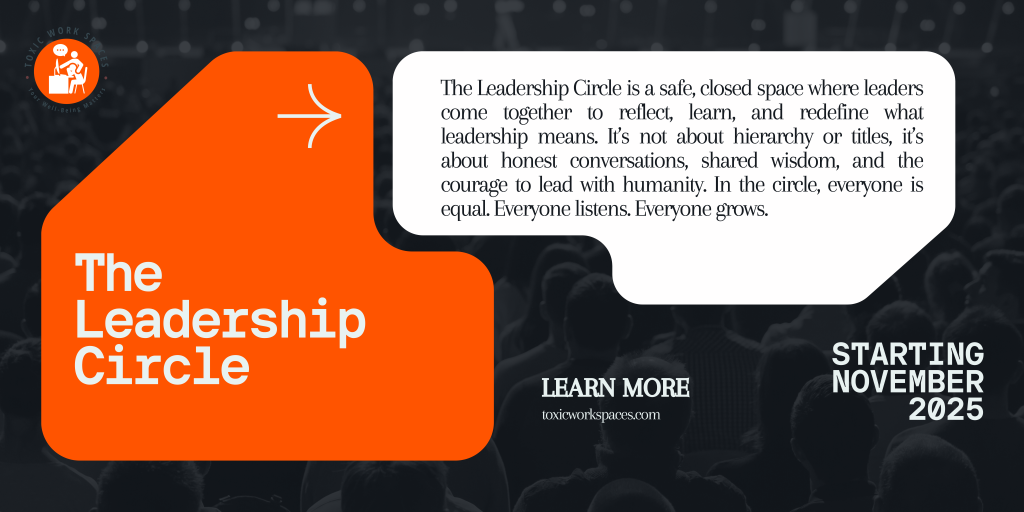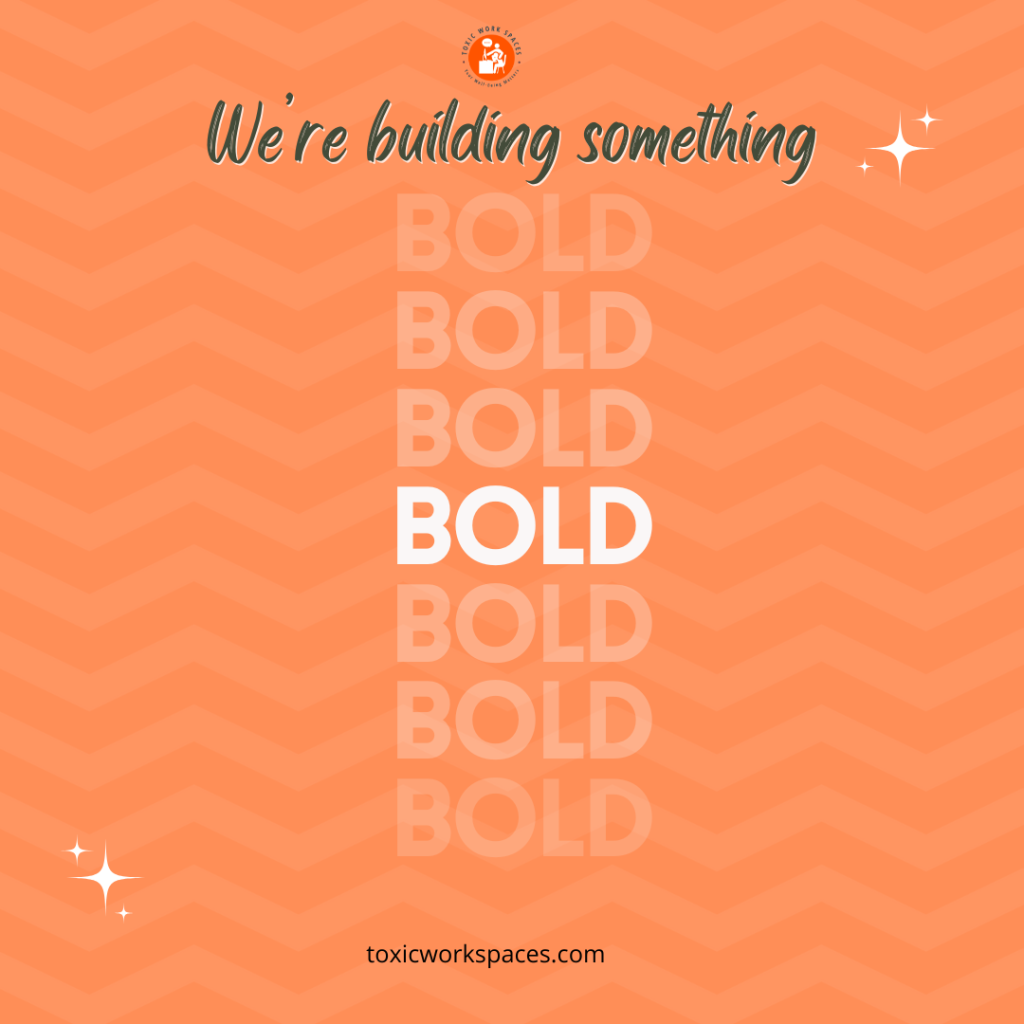The Leadership Circle
There’s something powerful about sitting in a circle. No one’s at the head. No one’s above. Everyone sees and is seen. That’s the essence of The Leadership Circle, an invitation-only roundtable where leaders come together to have the conversations most avoid. It’s not a conference. It’s not a panel. It’s not another “leadership development program.” It’s a circle and a place of reflection, truth-telling, and healing. The idea for The Leadership Circle was born out of countless conversations through Toxic Work Spaces, an initiative dedicated to helping individuals and organizations recover from and reimagine beyond toxicity. In those conversations, one truth kept surfacing: you can’t heal organizations without healing leadership. We’ve met professionals trying to rebuild themselves after years under toxic leadership. We’ve met well-intentioned leaders who’ve inherited broken systems. And we’ve met teams doing their best to function in workplaces that have lost their humanity. But something was missing, a space where leaders themselves could pause and ask, “What kind of leader am I becoming?” That’s when the idea of The Leadership Circle took shape, a safe, closed space where leadership isn’t about status, but self-awareness. We made a deliberate choice to keep it closed, not to exclude, but to protect. It allows leaders to be honest about the things they’re often afraid to admit the pressure to appear in control, the fear of being seen as the problem, and the loneliness of carrying everyone else’s expectations. Within this circle, there’s no judgment, only reflection. Every conversation is confidential, every insight shared with consent. But the outcomes will be shared publicly, anonymized and distilled into lessons that can guide other organizations toward healthier, more human-centered leadership. As we prepare for our inaugural session on November 20th, we’ve reached out to some of the incredible leaders joining us, and their reflections are already shaping what’s to come. One emerging leader shared, “The idea of gathering leaders based on influence instead of titles changes the game. You can see how much insight and challenge you can unlock in a room when everyone brings real perspective. Leadership isn’t about hierarchy, it’s about impact.” Another added, “If more organizations created spaces like this, leadership could feel human again.” And that’s exactly the point. We don’t want to teach leadership, we want to redefine it. The circle is symbolic. It reminds us that leadership is not linear. Every person who sits in it is both teacher and learner. It breaks the hierarchy that often silences truth and keeps empathy out of boardrooms. The circle says that everyone’s voice matters, reflection is as powerful as action, and listening is as transformative as leading. That’s how reinvention begins. The Leadership Circle is part of our broader Reinventing Organizations Project under Toxic Work Spaces, which challenges existing workplace models and equips leaders to build healthier cultures. Each circle explores questions like: How do you lead people who aren’t okay? What does accountability look like in the age of burnout? How do we rebuild trust after toxic leadership? Our goal is to host these circles across different African cities in partnership with individuals and organizations that believe in human-centered leadership. Because if we want to reinvent work, we must start by reinventing those who lead. Leadership today requires skill and soul and in The Leadership Circle, that’s what we’re helping leaders reclaim. To our partners joining us for the first circle, thank you. To the leaders preparing to sit with us, we can’t wait to listen, learn, and unlearn together. And to those who believe in what we’re building, we’d like to bring this circle to your city next. Because together, we can make leadership human again.
The Leadership Circle Read More »










